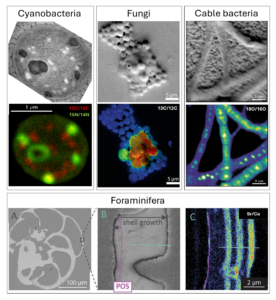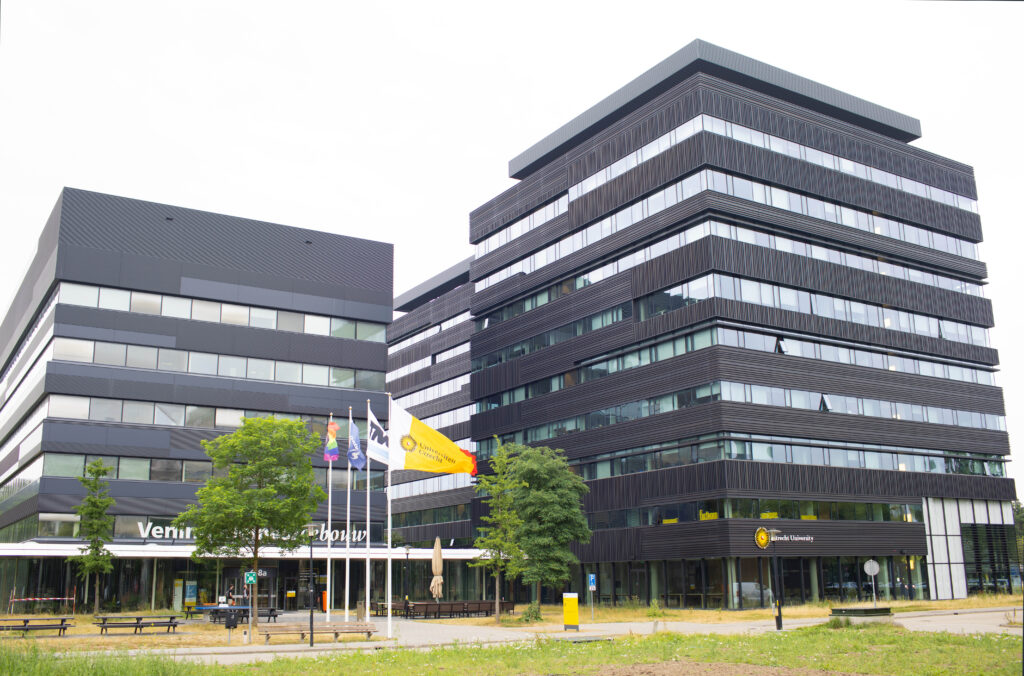NanoSIMS Lab
Read more about our national NanoSIMS facility
With the NanoSIMS technique, practically any kind of solid material can be analyzed. Our expertise lies in the field of natural sciences, where we quantify the activity of bacteria in (environmental) samples, look at the spatial distribution of elements in shells of marine organisms or measure isotopes in minerals, rocks and meteorites. The NanoSIMS instrument has many more applications, particularly in life sciences, medical research, agriculture and material sciences. As a Dutch national facility, our lab is open to internal and external users. Examples of NanoSIMS data acquired by our lab. Images show incorporation of 13C-labeled inorganic carbon and 15N-labeled N2 gas by a unicellular cyanobacterium Cyanothece (Polerecky et al. 2022), incorporation of 13C-labeled polyethylene by marine yeast Rhodotorula mucilaginosa (Vaksmaa et al. 2023), incorporation of 18O-labeled phosphate by cable bacteria (Geerlings et al. 2022), and Sr/Ca ratios in a shell of a benthic foraminifer Ammonia beccarii grown under variable Sr concentrations in the surrounding seawater (Geerken et al., 2022). Images obtained by TEM or SEM are shown in gray, the corresponding isotope or element ratio images obtained by NanoSIMS are shown in color.
Technical expert:
Scientific head:
Contact:
Michiel Kienhuis
Lubos Polerecky
nanoSIMS@uu.nl
 In our lab, we host the only Nano-scale Secondary Ion Mass Spectrometer (NanoSIMS) in the Netherlands. NanoSIMS is an ion imaging technique that allows the analysis of elemental and isotopic composition of solid materials at a sub micrometer spatial scale (down to 50 nm).
In our lab, we host the only Nano-scale Secondary Ion Mass Spectrometer (NanoSIMS) in the Netherlands. NanoSIMS is an ion imaging technique that allows the analysis of elemental and isotopic composition of solid materials at a sub micrometer spatial scale (down to 50 nm).



